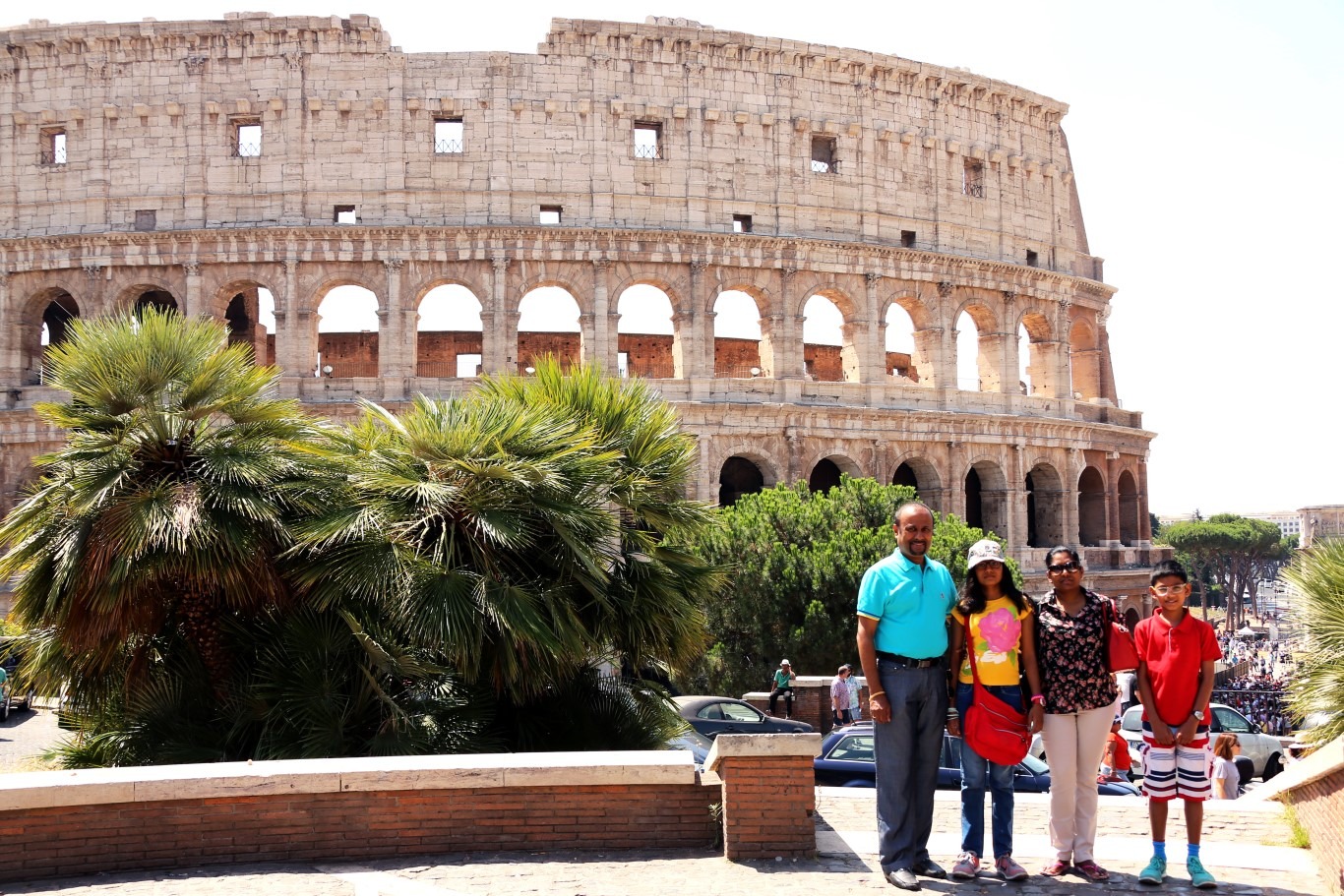Piazza del Campidoglio (on the Capitol Hill) houses the city council; Piazza Venezia square represents the ‘heart of the city’; Piazza Navona displays the spectacular Baroque triumphant architecture; Piazza di Spagna is a masterpiece of the XVIII century with its famous Spanish steps and, last but not least, St Peter’s Square is the majestic access to St Peter’s Basilica, the centre of Christianity. Rome’s squares are one of the main attractions of the Italian Capital, some of which are world famous. Not only are the squares beautiful and full of character, they hold a wealth of historical significance. The majority of squares are nestled with cafes and restaurants. Le Piazze are perfect places to eat, drink and be merry!
St Peter’s Square leads up to the majestic St Peter’s Basilica, which is in the heart of The Vatican City and the centre of Christianity. Thousands of tourists fill the holy square daily and hover in their hopes of catching a glimpse of Papa Francesco.
Piazza di Spagna
Piazza di Spagna is a masterpiece of the XVIII century. It’s gem is the world famous Spanish steps, with the Trinita dei Monti church situated at the top of the steps. If you are planning a visit during the Spring or Summer months then well done you! During this period, the steps are decorated with lovely blossoms, a beautiful picturesque site and a sight for sore eyes!
Piazza Navona
Piazza Navona centre piece displays the spectacular Baroque triumphant architecture, encompassing The Fountain of Four Rivers. Arch-rivals; Bernini and Borromini, during the period of Baroque Rome, confronted each other to create the epitome of the seventeenth century..
Piazza del Campidoglio
Piazza del Campidoglio was designed by the ever-so talented Michelangelo, merely to impress a king. And wow it certainly is impressive!
The square issituated on the Capitol Hill andis the headquarters’ of the Italian Government. The Capitoline museums are based here and are definitely worth a visit. The famous statue of the She-wolf with her twins (Romulus and Remus) can also been seen here.
Piazza Venezia
Piazza Venezia represents the ‘heart of the city’. The grandiose monument of Victor Emanuel II was commissioned by the dictator Mussolini. Impressive during the Mussolini era, however not so much appreciated by many locals of today, due to the over-sized dimensions, it is seen as ‘over the top’ and ‘overwhelming’ for many Italians. This monument faces the main shopping street, Via Del Corso, which leads all the way up to Piazza Del Popolo, another square that is equally as fabulous!
Piazza del Popolo
Piazza del Popolo holds several masterpieces inside its Church of Santa Maria del Popolo, including; Caravaggio, Raffaello, Bernini, Carracci, and many more. During the Summer, concerts are held here as well as other music festivals.
Stop for a moment and stand in the centre of the square facing Via Del Corso. Look straight ahead and you will see the grand white monument of Vittorio Emanuele II. Turn left and look up: you will see Villa Borghese Park; climb up the hill and you will experience one of the best views Rome has to offer.
Roman basilicas and churches
Within Rome there are about 19 basilicas to be found, 3 of which are patriarchal: St Peter’s Basilica – the world’s largest basilica of Christianity; St John in Lateran (San Giovanni Laterano) – former seat of the bishop’s residence and the most ancient church in the world, Santa Maria Maggiore…
Colosseum
The hugest structure of its type in ancient Rome, the elliptical-shaped Colosseum, took about ten years to build. It was once the epi-centre of ancient Rome entertainment, where the gladiatorial and animal combats were held and fought for their survival.
Roman Forum
During ancient Rome, the central area and administrative and corporate heart of Rome.
Pantheon
One of the most impressive buildings of the Imperial Rome is the Pantheon. Originally dedicated as a temple to “all the gods”.. A remarkable architectural feature, it remains the world’s largest unreinforced dome.
Vatican city
Vatican is the smallest state in the world, based in Rome in Italy. The papal residence, was built over the tomb of Saint Peter. The Vatican’s position as a sovereign state within a state was quaranteed by the Lateran Treaty of 1929, marked by the building of a new road, the Via della Conciliazione. This leads from huge St Peter’s basilica to Castel Sant’ Angelo, a monument to a far grimmer past. Inside the Vatican city we can find 11 Vatican Museums with the restored Michelangelo’s Sistine Chapel, and Vatican Gardens, an enchanted place, a system of large and small gardens, fountain, fish pool and enclousure for rabbits. They date back to medieval times when vineyards and orchards extended to the north of the Apostolic Palace.




